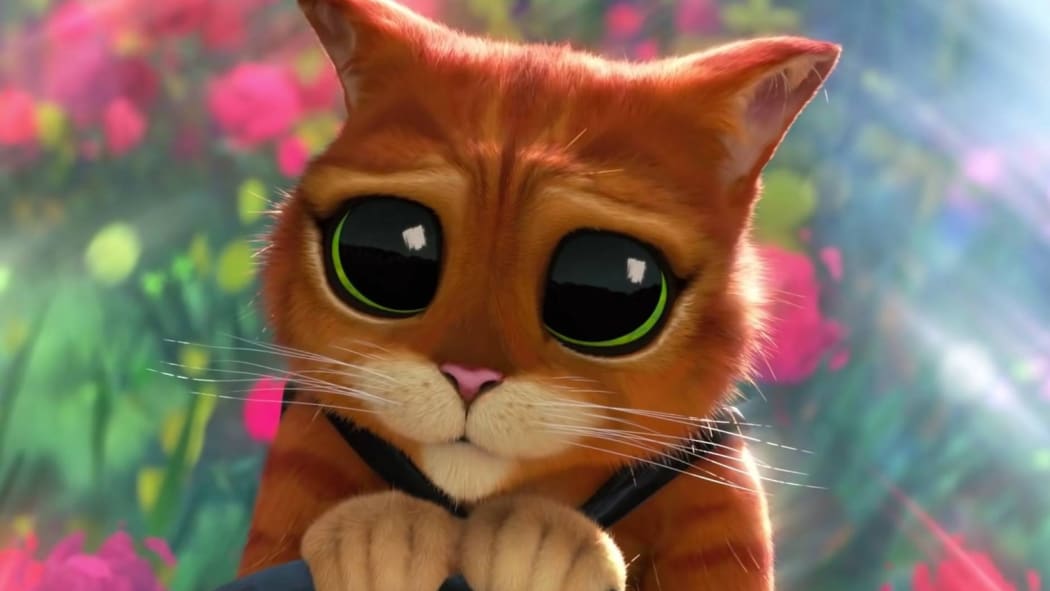Disney
Puss in Boots: The Last Wish” unveils the secret to human happiness

Puss in Boots: The Last Wish” not only serves as the latest escapade for the swashbuckling feline character introduced in Shrek 2 (2004) but also unfolds as a captivating narrative that transcends the animated genre, offering a thoughtful exploration of gratitude and contentment. Drawing inspiration from the stoic wisdom of Roman Emperor Marcus Aurelius, the film weaves a tale that goes beyond mere entertainment, imparting a valuable lesson about appreciating the present and not taking blessings for granted.
The movie kicks off with Puss, voiced by the charismatic Antonio Banderas, once again reveling in his fearless and carefree bravado, throwing a party in the governor’s house without permission. However, a mishap with a mission bell sets the stage for a transformative journey. Puss, initially unfazed by the notion of danger, soon discovers that he has only one life left out of his proverbial nine. This revelation propels him into a quest to obtain the Wishing Star, a sought-after artifact that holds the promise of regaining his lost lives.
The quest for the Wishing Star unfolds in a spaghetti-Western style, bringing Puss into conflict with familiar characters like Goldilocks and the Three Bears. The narrative cleverly uses the Wishing Star as a metaphorical macguffin, symbolizing the desires and aspirations that drive the characters. As Puss sets out on this adventure, the film introduces a Jiminy Cricket-like bug, serving as Jack Horner’s conscience, adding a layer of depth to the story.

The underlying theme revolves around the dangers of yearning for miracles and the importance of cherishing what one already has. Puss and his companion, Kitty Softpaws, portrayed by Salma Hayek, undergo a realization that authentic desires often stem from choices rather than wishes. The character of Perrito, a dog providing comic relief, becomes a poignant embodiment of gratitude despite a challenging past. His cheerful demeanor and appreciation for life’s simple joys stand in stark contrast to the film’s antagonist, Big Jack Horner.
Goldilocks’ character introduces another dimension to the narrative, seeking the Wishing Star to wish for a new family. However, the film challenges her perspective through Perrito’s lens, emphasizing that the love and family she desires may already be present in her life. This exploration of contrasting desires and perspectives adds depth to the film’s thematic resonance.
In the character of Big Jack Horner, the film takes a humorous yet insightful detour into the darker side of discontent. Jack’s inability to appreciate his considerable advantages, despite a privileged upbringing, serves as a satirical commentary on the absurdity of incessant complaints.

“Puss in Boots: The Last Wish” transcends the typical animated fare by embedding stoic philosophy and thematic depth into its narrative fabric. In a contemporary context where envy and a ceaseless desire for more often prevail, the film emerges as a poignant reminder to cherish the prosperity around us. The cautionary tale of Big Jack Horner serves as a mirror to society’s propensity for discontent and the corrosive effects of perpetual yearning.
In conclusion, the film’s exploration of gratitude, choices, and the quest for contentment elevates it beyond the realm of animated entertainment. It delivers a timely and resonant message about the importance of appreciating the present, finding happiness in what one already possesses, and avoiding the pitfalls of unbridled desire. “Puss in Boots: The Last Wish” stands as a testament to the enduring power of animated storytelling to convey profound philosophical insights with charm and humor.
We bring out some of the most well-known Disney collection, all of which are available at reasonable costs. Visit our link now if you are interested in the Disney collection


Lilo, Stitch, Nani, Jumba Jookiba, Pleakley,
